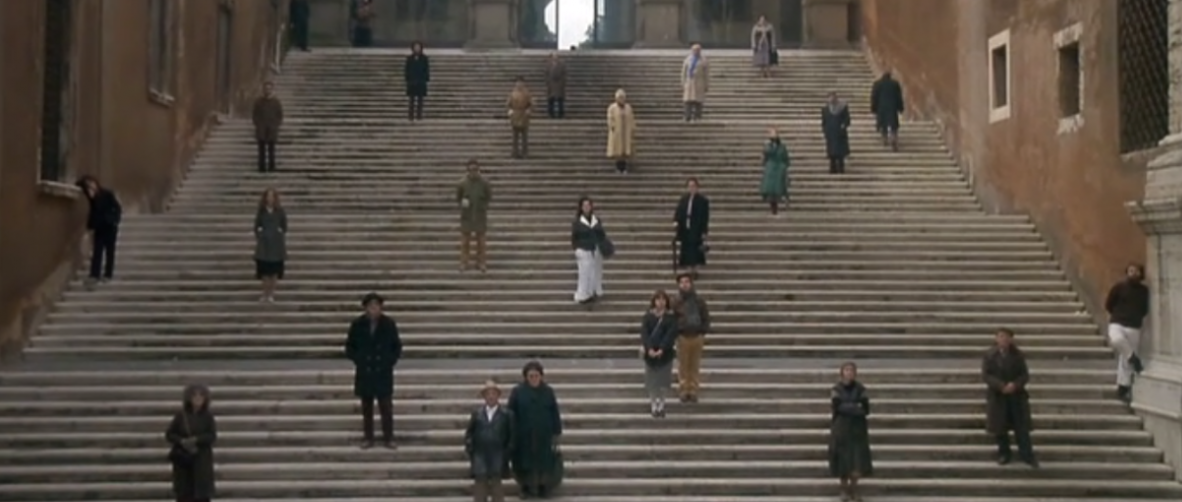Assignment #4 (due Thursday, October 5th)
1. Upload at least one image of WS (or LS) of landscape/city scape, think of the opening of a film! (establishing the geography!)
2. Take photos of a person as follows:
Full Shot
Cowboy shot
MS
CU
ECU
OTS
Notes:
Please refer to “Framing Shots” below
3. Have two actors, and take photos of 50 – 50, OTS, dirty single (Have fun with your friends or family members!)
These are the requirements for the Assignment #3 stated above.
Some related Info. from our recent sessions:
A. The conceptual tools in cinema:
On “the frame, the lens, light and color, texture, movement, establishing, and point-of-view”.
The Frame: Setting the frame is a series of choices that decide what the viewer will see and not see. The first of these decisions is where to place the camera in relation to the scene. After that, there are choices concerning the field of vision and movement, all of which work together to influence how the audience will perceive the shot: both in outright content and in emotional undercurrent and subtext to the action and the dialog.
Framing Shots:
WS (wide shot) or LS (long shot)
Full shot
Cowboy
Two shot
MS (medium shot)
CU (Close-up)
Clean single
Dirty single
ECU (extreme close-up)
OTS (Over-the-shoulder)
B. Since we make scenes one shot at a time, we can consider that we are assembling the elements that will make the scene.
C. Laying out the Scene – Establishing the Geography:
…A phrase that is often used is that we have to “establish the geography”. In other words, we have to give the audience some idea of where they are, what kind of place it is, where objects and people are in relation to each other…
…Many filmmakers consider it more effective if the establishing shot can be combined with a piece of the story…
D. Camera Angles & Framing Actors:
50 – 50 (two actors, the camera is positioned to observe them equally, not subjective)
When the camera gets closer to one of the actors, it becomes more subjective.
E. Function Shots:
Establishing shots
Cutaway
Insert
Connecting shot
Transitional shot
… A cutaway is any shot of some thing or person in the scene other than the main characters we are covering but that is still related to the scene. The definition of a cutaway is that it is something we did not see previously in the scene, particularly in the master or any wide shots.
An insert is an isolated, self-contained piece of a larger scene. To be an insert instead of a cutaway, it has to be something we saw in the wider shots. Example: she is reading a book. We could just shoot the book over her shoulder, but it is usually hard to read from that distance. A closer shot will make it easy to read.
F. The Coverage:
The coverage consists of the over-the-shoulders, medium shots, and close-ups that will be used to complete the scene. Think of the master as a framework for the whole scene—coverage is the pieces that fit into that framework to make it all work together. Shot master first!
G. The overlapping method:
It is sometimes called the triple-take method. It is not used as much as other
ways of shooting a scene, but it is important and it is especially useful in understanding the concepts of continuity.
Brown, B. (2016). Cinematography theory and practice: Image making for cinematographers, directors, and videographers. (3rd ed.). Boston: Focal Press.




Landscape
https://openlab.citytech.cuny.edu/ent3290fall2017/wp-admin/upload.php?item=418
Full Shot
https://openlab.citytech.cuny.edu/ent3290fall2017/wp-admin/upload.php?item=417
Cowboy
https://openlab.citytech.cuny.edu/ent3290fall2017/wp-admin/upload.php?item=412
MS
https://openlab.citytech.cuny.edu/ent3290fall2017/wp-admin/upload.php?item=419
CU
https://openlab.citytech.cuny.edu/ent3290fall2017/wp-admin/upload.php?item=413
https://openlab.citytech.cuny.edu/ent3290fall2017/wp-admin/upload.php?item=414
ECU
https://openlab.citytech.cuny.edu/ent3290fall2017/wp-admin/upload.php?item=416
https://openlab.citytech.cuny.edu/ent3290fall2017/wp-admin/upload.php?item=415
OTS
https://openlab.citytech.cuny.edu/ent3290fall2017/wp-admin/upload.php?item=415
https://openlab.citytech.cuny.edu/ent3290fall2017/wp-admin/upload.php?item=422
https://openlab.citytech.cuny.edu/ent3290fall2017/wp-admin/upload.php?item=426
https://openlab.citytech.cuny.edu/ent3290fall2017/wp-admin/upload.php?item=426
https://openlab.citytech.cuny.edu/ent3290fall2017/wp-admin/upload.php?item=423
Establishing Wide Shot
https://openlab.citytech.cuny.edu/ent3290fall2017/wp-admin/upload.php?item=271
Clean Single
https://openlab.citytech.cuny.edu/ent3290fall2017/wp-admin/upload.php?item=261
Dirty Single
https://openlab.citytech.cuny.edu/ent3290fall2017/wp-admin/upload.php?item=255
OTS
https://openlab.citytech.cuny.edu/ent3290fall2017/wp-admin/upload.php?item=260
Full Shot
https://openlab.citytech.cuny.edu/ent3290fall2017/wp-admin/upload.php?item=259
ECU
https://openlab.citytech.cuny.edu/ent3290fall2017/wp-admin/upload.php?item=258
CU
https://openlab.citytech.cuny.edu/ent3290fall2017/wp-admin/upload.php?item=252
Two Shot
https://openlab.citytech.cuny.edu/ent3290fall2017/wp-admin/upload.php?item=257
Cowboy
https://openlab.citytech.cuny.edu/ent3290fall2017/wp-admin/upload.php?item=256
MS
https://openlab.citytech.cuny.edu/ent3290fall2017/wp-admin/upload.php?item=255
WS
https://openlab.citytech.cuny.edu/ent3290fall2017/wp-admin/upload.php?item=253
https://openlab.citytech.cuny.edu/ent3290fall2017/files/2017/09/20170926_191630.